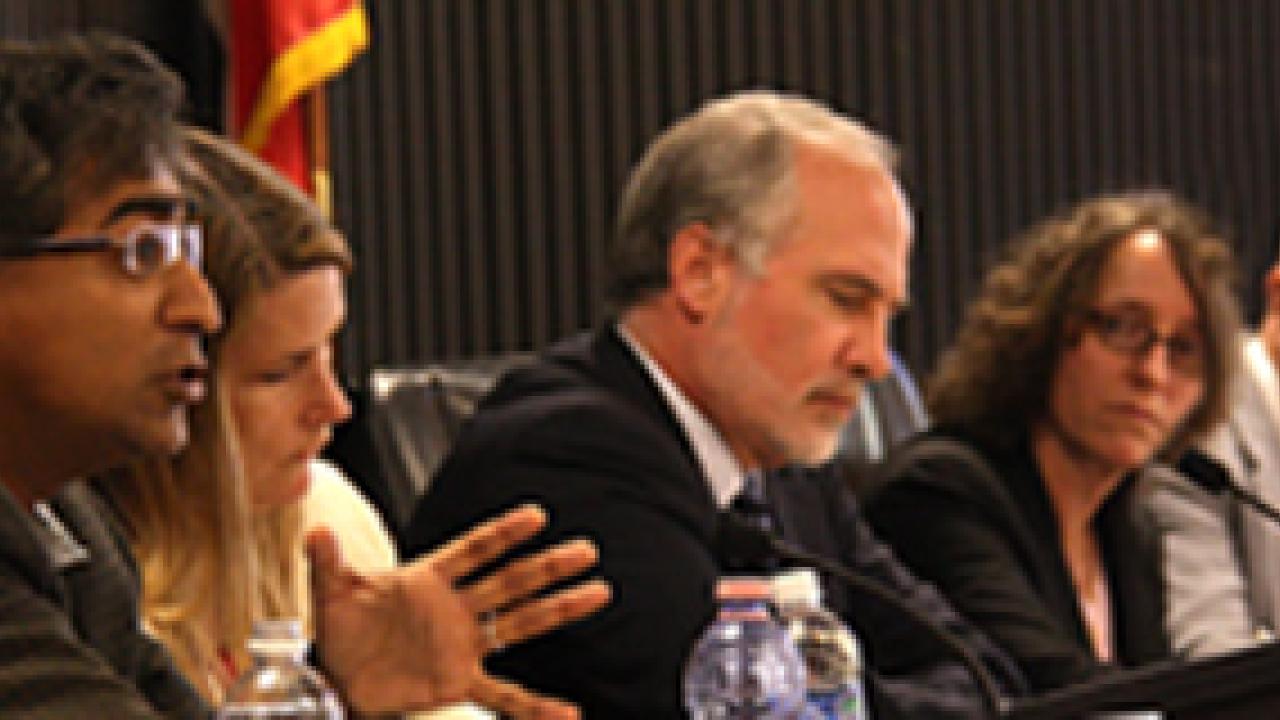Not long ago, sexual harassment trials were often “he said, she said” disputes, as plaintiffs, defendants and their attorneys argued over what was said, where and when.
Now, thanks to Twitter, Facebook, text messaging and social media, a permanent record of the exact words exchanged often exists. This material can be introduced in court, complete with a time stamp showing when it happened.
“It just makes for a beautiful exhibit, and there’s no longer any question about what was said,” said Cassandra Ferrannini, an employment law attorney with the Sacramento law firm Downey Brand.
Social media are changing the practice of law with regard to sexual harassment, copyright infringement, privacy rights and many other issues, according to Ferrannini, UC Davis School of Law professors Edward Imwinkelried and Anupam Chander, and attorneys Roger Dreyer and Catherine Kirkman, all of whom participated in a panel discussion on the subject at UC Davis School of Law. The Feb. 3 event was part of Digital Media Day, a program organized by the Entertainment and Sports Law student group at UC Davis School of Law.
Dreyer, who represented the plaintiffs in the wrongful death trial of Jennifer Strange, a Sacramento woman who died after participating in a water-drinking contest on a local morning radio program, provided a striking example of how Internet technology and social media have impacted trial practice.
Strange’s story generated an enormous amount of online commentary. A recent Google search produced about 110,000 references to her name. Because of that, the potential for a jury member to read commentary online or to comment via social media—acts of misconduct that could have invalidated any verdict—was great. For that reason, Dreyer became the first attorney in California to require jurors to sign declarations that they would not visit the internet throughout the course of the trial.
Dreyer said he expected the proceedings to result in a large judgment in favor of the Strange family, and that insurance company investigators would approach jurors afterwards seeking evidence of misconduct such as reading about the trial or sending a message about it. The signed declarations would serve not only to remind jurors of their responsibilities, but also as a defense against motions for a mistrial in the case that resulted in a $16 million judgment he gained for Dreyer’s clients.
'General, flexible principles'
Professor Imwinkelried, an internationally renowned expert on evidence law, said the legal system has experienced few problems in assimilating evidence gleaned from social media, thanks to the flexibility of federal rules of evidence established in the early 1970s and subsequently adopted by most states.
“Evidence law itself is adapting very nicely, thank you, without need of reform,” he said. “The drafters made a very sound decision not to try to micromanage or anticipate technological developments, but to give us general flexible principles that would allow judges later to do the adaptation.”
While it has been clearly established that email, “tweets,” material posted on Facebook and other information gleaned from social media can be introduced as evidence, the effects on society, businesses and individuals remain unclear.
Kirkman, a partner in the Palo Alto law firm Wilson Sonsini Goodrich & Rosati and an expert in media and technology law, noted that social media is changing the nature of copyright and intellectual property law, as internet service providers and the legal system adjust to accommodate millions of users posting material via blogs, Facebook and other social media.
Such postings—often of copyrighted materials—have become an integral part of social media, and assessment of the potential liabilities has become an important part of the process for online businesses. Best practices are evolving, she noted, and in most cases it has been sufficient for service providers to agree to remove infringing materials upon request of the copyright holder.
While assessing risks and adopting strategies to deal with them has become a routine part of doing business for social media companies, users typically don’t understand that, when they send a test message or post to social media sites, they are creating a virtually permanent record of their thoughts and activities that could someday be introduced as evidence, Ferrannini said. Impulsive remarks, candid pictures and other materials sent via social media will remain on computer hard drives and system servers for much longer than most people think, and can turn up years later.
“People are not considering what they are putting down on the electronic record,” she said. “And there’s a permanence that people don’t understand. It’s an amazing wealth of evidence, and people don’t realize that stuff can be pulled up down the road.”
Professor Chander, an expert in cyber law and intellectual property, suggested the law may need to evolve to include more privacy protections for individuals. Early privacy laws arose in response to technology that allowed for people to be photographed in public without their consent, Chander said. Now that technology has made it possible for virtually anything a person does to be videotaped, texted or otherwise made part of the electronic record, laws may need to change again, he said.
Joe Martin is a senior writer at the UC Davis School of Law.
Media Resources
Clifton B. Parker, Dateline, (530) 752-1932, cparker@ucdavis.edu
